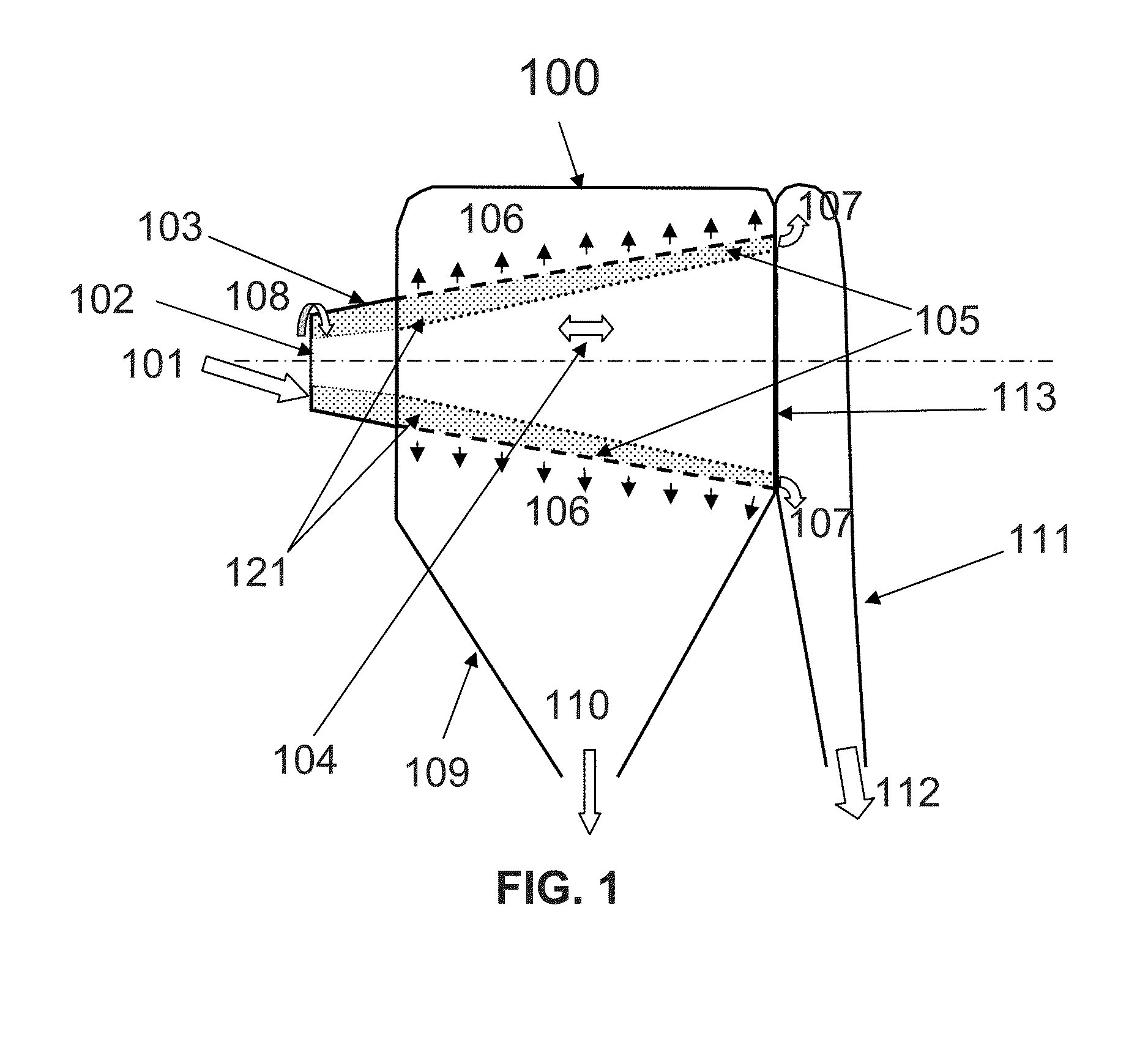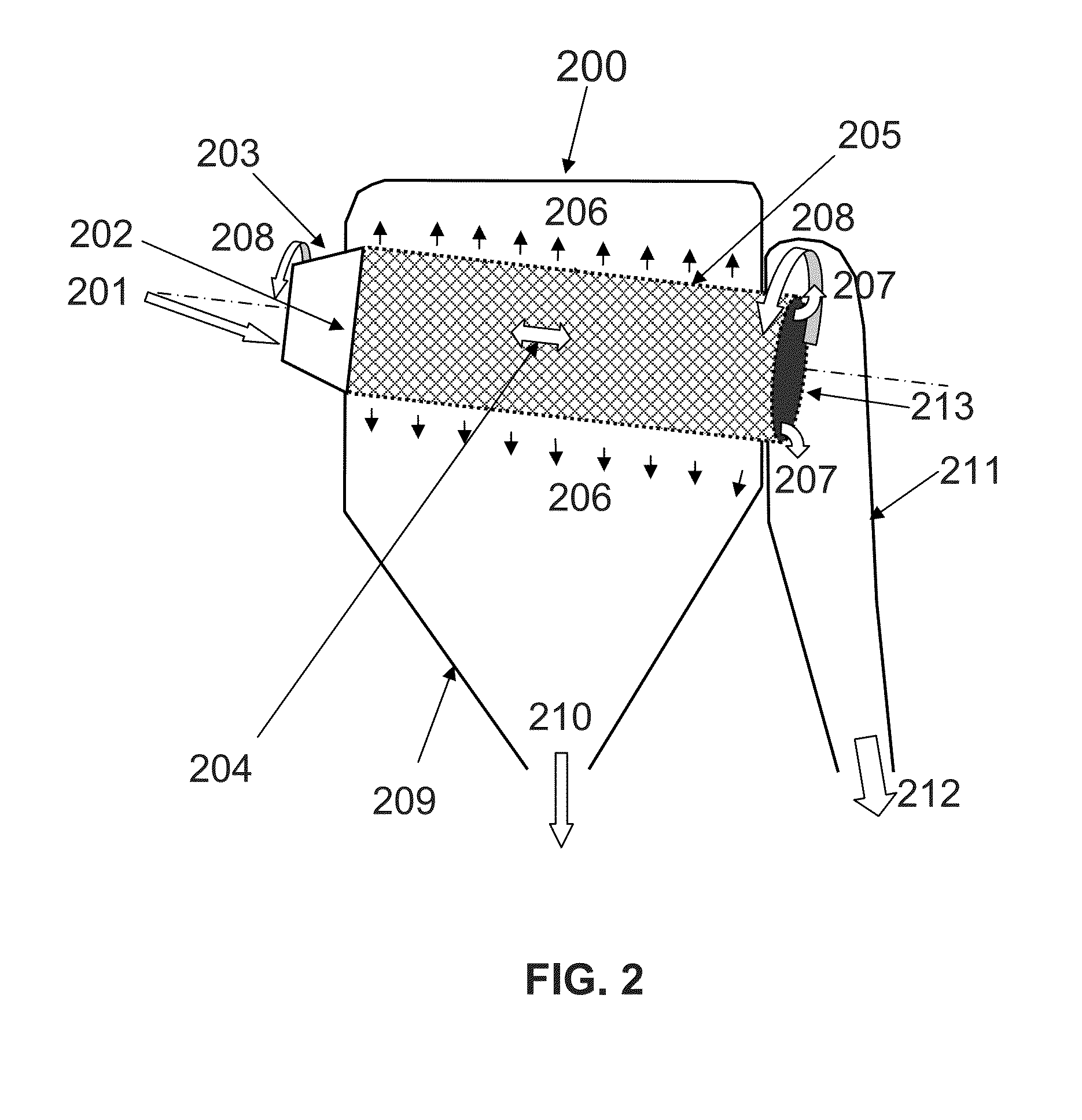Centrifugal Size-Separation Sieve for Granular Materials
a technology of granular materials and sieves, which is applied in the direction of solid separation, screening, chemistry apparatuses and processes, etc., can solve the problems of less effective trommel screens, vibration-screen sifters that do not work well for separation of small particles, etc., and achieve efficient and robust operation of processing equipment, improve separation, and obtain multiple size fractions faster
- Summary
- Abstract
- Description
- Claims
- Application Information
AI Technical Summary
Benefits of technology
Problems solved by technology
Method used
Image
Examples
Embodiment Construction
[0021]Referring more specifically to the drawings, for illustrative purposes the present invention is embodied in the apparatus and method generally shown in FIG. 1 through FIGS. 5A-C. It will be appreciated that the apparatus may vary as to configuration and as to details of the parts, and the method may vary as to its particular implementation and as to specific steps and sequence, without departing from the basic concepts as disclosed herein.
[0022]The centrifugal sieve and sieving method of the invention utilizes centrifugal force in rapidly-rotated conical or cylindrical screens as the primary body force driving size segregation. The present invention is based on a new approach for solids sieving, particularly well suited for a low gravity environment. Axial flow of solids in vibrating centrifuging conical containers can function nearly independent of gravity. Also, as long as some gravity force is present, inclined rotating cylindrical screens, with solids centrifuged on the ou...
PUM
 Login to View More
Login to View More Abstract
Description
Claims
Application Information
 Login to View More
Login to View More - R&D
- Intellectual Property
- Life Sciences
- Materials
- Tech Scout
- Unparalleled Data Quality
- Higher Quality Content
- 60% Fewer Hallucinations
Browse by: Latest US Patents, China's latest patents, Technical Efficacy Thesaurus, Application Domain, Technology Topic, Popular Technical Reports.
© 2025 PatSnap. All rights reserved.Legal|Privacy policy|Modern Slavery Act Transparency Statement|Sitemap|About US| Contact US: help@patsnap.com



